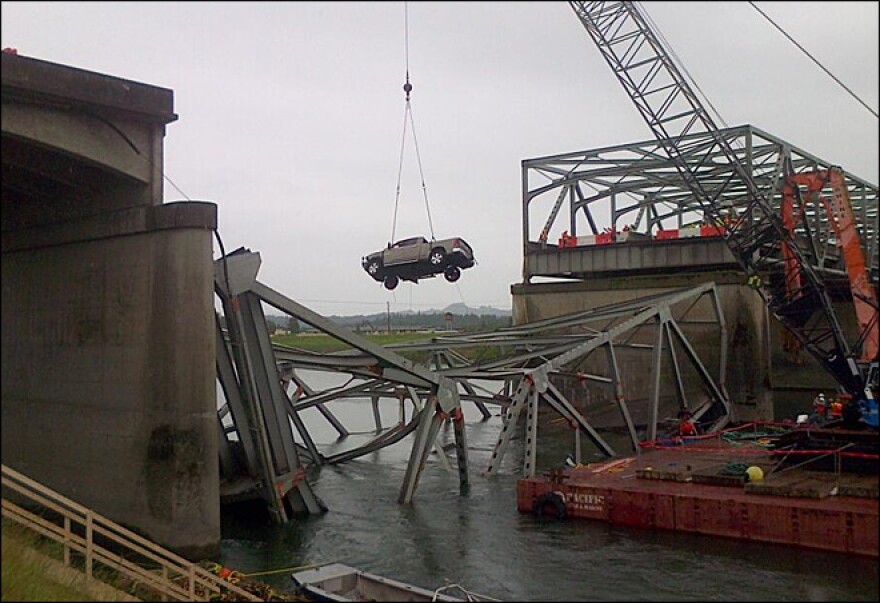Crews have begun removing the mangled steel, crumpled pavement and cars that fell into the Skagit River in Mount Vernon after a span of an interstate highway bridge collapsed.
The Washington Department of Transportation announced that the retrieval of the fallen section began, a day after barges with equipment arrived at the river.
The department says the fallen section has to be removed before final inspections of the spans still standings can begin.
Gov. Jay Inslee announced Sunday that the state plans to have temporary spans built and installed on the bridge in about three weeks, but before that work begins the remaining spans must clear inspection.
The section of the I-5 bridge collapsed Thursday, sending cars and people into the water. All survived with non-life threatening injuries.
For farmers, business owners and government officials up and down the West Coast, Washington's bridge collapse on Interstate 5 represents much more than a close brush with tragedy. As much as $20 billion in freight travels to and from Canada and along the busy north-south corridor each year.
People in Canada won't go hungry if they have to go without Washington apples being trucked to them. But the director of the Border Policy Research Institute at Western Washington University says American apple farmers may feel a pinch.
Don Alper says the economic impact from the bridge collapse will spread farther than Western Washington.
The Canadian border north of Bellingham is the nation's fourth busiest land border ports of entry to the north.
Many of the goods crossing that border stay in Washington state, and some stop before the collapsed bridge. But Alper says close to $10 billion in freight involves business as far away as California and Mexico.





